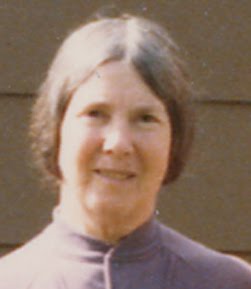History_previous
1964 – present
Shunryu Suzuki-roshi arrived in San Francisco from Japan in 1959 to be resident priest of Sokoji, the Japanese-American Soto Zen Mission in San Francisco. In 1961, he and his new American Zen students founded the San Francisco Zen Center. (The early history of Zen Center and Suzuki-roshi’s life in the U.S. are well documented in his 1999 biography, Crooked Cucumber by David Chadwick.)
In 1964, Roshi visited friends in Redwood City and remarked that if a good meeting place could be found on the Peninsula, he would like to begin a weekly meditation group. A Stanford graduate student offered his living room. He sent postcards to those on Zen Center’s “Wind Bell” mailing list who lived in the area, and in early November, 1964, the first zazen and lecture was held at 1005 Bryant Street in Palo Alto. Three or four people attended the first few Thursday morning meetings. In April, 1965, an evening group was established in Redwood City.
On July 8, 1965, the morning group was moved to the living room of the home of Marian Derby at 746 University Avenue in Los Altos. Meditation was followed by a brief lecture and then an informal breakfast. The family-like discussions at the breakfast table with Roshi were as popular as his talks. In 1966, the evening group also moved to Marian’s home. In a tradition that continues at Kannon Do, tea and cookies were served following the weekly lecture. When Marian’s son graduated from Stanford and left for medical school, his room became available for Suzuki-roshi to stay overnight. The schedule was changed to Wednesday evening and Thursday morning. Most often it was Marian who picked up Roshi in San Francisco and drove him home the next day.
In 1965, Marian began to tape-record Roshi’s morning lectures. These “little talks” were rarely longer than fifteen minutes. Marian transcribed the tapes each week, going over each transcript with Suzuki-roshi. When the idea of creating a book from the lectures arose, it was originally titled “Morning Talks in Los Altos.” (In 1967, after the transcript was given to San Francisco Zen Center for final editing, the book received a new title, Zen Mind, Beginner’s Mind. In 1968, Trudy Dixon, very ill with cancer, took on the editing job. Trudy’s deep understanding of Zen and her great skill as a writer contributed significantly to this respected and influential book, published in 1971. Trudy died before its publication.)
After a year of meeting in Marian’s living room, the number of people attending zazen and lecture grew to the point of overcrowding. Marian offered to convert her garage into a zendo to be used for daily meditation and weekly lectures. Suzuki-roshi designed a traditional Japanese-style zendo to fit the small space. Construction was begun in June, 1966, performed entirely by Sangha members. Haiku Zendo, named for its seventeen cushions that matched the number of syllables in a Haiku poem, was officially opened on August 4, 1966.
By 1968, Marian felt the need to deepen her Zen practice and determined to go to Tassajara monastery. However, her two teenage daughters were still living at home, and she did not want to disrupt Haiku Zendo. She asked Les and Mary Kaye, who had been attending Haiku Zendo for two years, if they would consider moving from San Jose to her Los Altos home to become administrative caretakers. The Kayes accepted her offer and moved with their two young children in September.
In 1969, Suzuki-roshi suggested that Haiku Zendo invite Kobun Chino-sensei to become its resident teacher. Kobun arrived in February, 1970, and lived for nine months with the Kaye family. He married Harriet whom he had met at Tassajara on his previous visit to the U.S., and they rented a house on Orange Avenue, one block from Haiku Zendo. In January, 1971, Les was ordained as a Zen priest by Suzuki-roshi in a ceremony at Haiku Zendo, the converted garage in what was becoming Silicon Valley. Roshi died from cancer in December of that year.
With Kobun Chino as its spiritual leader, Haiku Zendo established a steady practice and presence on the San Francisco Peninsula. In 1979, having once again outgrown its space, the Sangha raised sufficient funds to purchase – for $40,000 – a small former Pentecostal church in an older, quiet neighborhood on College Avenue in Mountain View. The new zendo was named Kannon Do, “place of compassion.” In 1983, Kobun appointed Les Kaye the spiritual leader of Kannon Do and moved to New Mexico to assist in establishing a new Zen Center. In 1985, Les received Dharma Transmission – approval by one’s teacher to teach and ordain students – by Hoitsu Suzuki-roshi, son and heir of Shunryu, in a month-long ceremony at Rinsoin, the family’s home temple in Yaizu, Japan. In 1988, the Kannon Do Sangha invited Les to become its first abbot.
In 1990, the Kannon Do membership felt the need for a larger facility to accommodate its growing activities and to widen its accessibility to the larger community. Following ten years of fund-raising and three years of searching for suitable property in a tight real estate market, a one-half-acre property, with two houses, was purchased at 1972 Rock Street for $800,000. An additional year and a half was required to obtain the Conditional Use Permit from the city of Mountain View. Final plans for the new center were completed in 2004, construction took place in 2005, and the Sangha moved into the new Kannon Do in 2006. A formal dedication ceremony was held March 3, 2007. Fund-raising for additions and improvements to our new center are ongoing.




